It’s the gold roof on Rafael Viñoly’s Colchester visual arts centre that will wow the visitors – but the real marvel was getting it up without touching the topsoil.
Rafael Viñoly seems to be the architect of choice when English councils need a cutting-edge arts facility to revitalise rundown areas of their constituency. First Leicester and now Colchester have turned to the Uruguayan-born architect.
Funded by the local authorities and Arts Council England, these two striking architectural statements are intended to rejuvenate their surrounding grotty neighbourhoods.
In terms of design, there are marked similarities: the architect strived to make both transparent so that the art inside is visible to the public outside. They were even built by the same structural and services engineers.
The £16.5m Colchester visual arts facility – or Firstsite, as it will be known – is a single-storey, semi-circular structure that resembles a giant golden banana. The shape was influenced by its surroundings, says Rob Seymour, the project architect. “There is a crescent of trees on the site, and that is the geometry Rafael responded to.”.
Like Viñoly’s Leicester building, the Colchester arts centre presented its engineers and contractors with some unusual challenges. For a start, the construction team had to account for the city’s historical legacy – the arts centre is being built right on top of an ancient Roman monument.
Then there was the building’s fiendishly complex design, which was further complicated by the unevenness of the site. To combat these problems, the team had to devise an innovative combination of design and structural solutions.
The Roman ruins weren’t an issue at first. The brief called for a straightforward arts centre on Queen Street, where the existing facility was, and there were no historical remains to contend with on that site. But then Viñoly arrived.
“As soon as Rafael saw the site his immediate response was to move the building from Queen Street into the park where it could relate to its context – a pavilion in the park,” says Seymour.
That the proposed site was an ancient scheduled monument did not deter Viñoly. A long drawn-out negotiation with English Heritage began. “English Heritage’s take on it was that there was no evidence of any extraordinary archaeology, and the quality of the new building would be for the greater good of Colchester,” says Seymour.
Unfortunately, however, a survey showed there were remains just 150mm below the surface. The team eventually got permission to build on the site, but English Heritage forbade any kind of excavation, including removal of topsoil. It was down to structural engineer Adams Kara Taylor to come up with a solution.
“We’d never done anything like this before,” comments structural engineer John Gerrard. “We had to develop a strategy that avoided digging into the ground.”
The answer was to bring in a fill material to create a solid base. “We weren’t allowed to compact this until it was a metre high in case we damaged the remains underneath,” says David Moffett, the project director for contractor Banner Holdings.
English Heritage’s take on the site was that there was no evidence of any extraordinary archaeology and the quality of the building Colchester would get would be for the greater good
Rob Seymour, project architect
A 200mm thick raft foundation was placed on top of the fill, stepped in places because the site was not level. “We didn’t level the fill, as the building was designed to reflect the site’s topology. This also minimised the need to import material onto the site,” explains Gerrard.
The foundation slab features an up-stand ring beam 1.5m wide and 1m high to take the weight of the structural columns at the building’s edge. The ground-floor slab is positioned just 500mm above the raft. This does the job of turning the steps of the raft into sloped areas, which makes internal access easier. It also creates a handy plenum for distributing conditioned air into the building – the Romans used underfloor heating too, Moffett points out.
The topography is part of the reason for the building’s complex design. Pictures may give the impression it is a semi-circle, but the reality is far more complicated. For one thing, the site slopes in all directions, which means the west side of the building – where the entrance will be – is 6m higher than the east side.
The distance between the inner and outer curved walls is not constant either – the semicircle is fatter at the entrance end than the other. Both inner and outer walls are progressively inclined along their respective lengths – almost vertical at the east side and getting progressively more angled towards the entrance. This is intended to add dynamism to the visitor’s experience inside the building. Finally, the roof is no simple plane but stepped in the middle; it uses clerestory windows to get soft northern light deep into the interior.
Getting this complex building from concept to reality involved a 3D-modelling computer program called Rhino. “Rhino is very good at modelling complex 3D geometry,” says Seymour. Having created an accurate virtual model Rafael Viñoly Architects could cut a “slice” or section through this model anyway it liked. This could then be converted into a format that could be read by the specialists, enabling them to manufacture the respective building elements.
Then came the challenge of how to set up these elements on site. The complex geometry, combined with the fact there was no single point of reference for the builders to work from, made it difficult to know where to start. This was because despite the semi-circular nature of the building, only the inner wall was of a single radius all around. And this was only true for the base section of the inner wall, as it rises at different angles all along its length. The centre point of the wall radius was set at the base of an old set of steps facing the building. All the other radii have different centre points, and are inclined at changing angles.
The solution was to create one accurate element that the specialists could work from. “Our strategy was to use the steel frame as a geometrical reference point for the contractor,” says Seymour. “This meant there was less need for specialist surveyors.”
On the face of it the steel frame sounds simple enough. It is a portal frame of the type used to construct large sheds and it comprises several sections, each of which consists of a beam supported by columns at the edges of the building. This frame was fast to erect and created a large column-free space, which is what the architect wanted.
But even this was more complicated than it first appeared. The beam is cranked to form the step for the clerestory windows and the two main elements making up the beam are curved. Each portal section is unique – the column heights are different and the radii of each curved section varies, too.
To construct the frame, close collaboration between the engineer, architect and steelwork specialist SH Structures was essential. The architect also took a more hands-on approach than usual.
“We drew the outside face of the steel for the columns and the beams, which is not usual for architects to do,” says Seymour.
The most tricky aspect of the frame manufacture was bending the 600mm deep top steel sections of the frame to the correct radius. This was done by steel bending specialist the Angle Ring Company. Moffett and Seymour describe this as “incredible”. The beam is run through a series of rollers, which exert pressure on it so it bends. It is then run through several more times and measured after each pass until the correct radius is achieved.
Aluminium-copper alloy is harder to work with than copper – it’s not as malleable. But nothing frightens me. I don’t like the word ‘can’t’. It doesn’t exist in my vocabulary
Ted Tibbs, Richardson Roofing
Moffett says erecting the frame was relatively straightforward and took five to six weeks, which vindicated the approach. The only hiccup was near the entrance of the building, where there was a dramatic cantilevered roof and wall section. This has curved sections, and when it was erected, the leading edge of the cantilevered roof section dipped in the middle, owing to the portal sections near the entrance deflecting more than anticipated.
“It is almost impossible to predict the deflections in the steel with those spans,” says Seymour. The cladding on the leading edge could have been made deeper to cover the dip, he says, but the architect disliked this option as the entrance is such an important aspect of the building. The solution was to beef up the portal sections adjacent to the entrance with extra steel so they didn’t deflect. Now, the leading edge of the cantilevered roof section is perfectly straight.
The next stage of construction was the gold skin. A timber packer 50mm deep was placed over the curved steel sections. The idea was that this could be planed down where necessary. The frame was topped with sections of steel cladding to give it lateral rigidity and provide a base for the insulation. Then a 250mm deep layer of Foamglas insulation – made from foamed glass – was laid over the roof sections with metal plates placed over the insulation. These were bonded to the Foamglas using bitumen and topped by a felt layer. External grade plywood was used at the sides.
“With the felt on you have a watertight structure,” says Moffett. “The cladding is a very skilled job and takes a long time to do as it needs a lot of attention to detail. The waterproof layer gave the cladding team more time to do their work.”
The 0.5mm thick cladding was made by copper products specialist KME. It is an alloy of copper and aluminium, which gives it a distinctive gold colour. “We settled on gold for a number of reasons,” says Seymour. “We wanted a material that created a statement, something that was striking and different. Also it fits into its environment very well and the alloy of copper and aluminium fixes the gold colour, so it won’t change much.”
The sheet was used as a standing seam roof, which gave it a textured surface. From a distance it almost looks like coarsely woven fabric. Roof valleys follow the line of the steel frame below. The angling of the seams towards this gives the roof a distinctive herringbone appearance as well as providing drainage. This pattern was repeated on the sides of the building.
Specialist Richardson Roofing created all the seams by hand. Contracts manager Ted Tibbs was relaxed about the challenge, despite never having worked with aluminium-copper sheets before. “It’s the first time we’ve used it. It’s a bit harder to work with than copper – it’s stiffer and not as malleable,” he says. “Nothing frightens me though. I don’t like the word ‘can’t’. It doesn’t exist in my vocabulary.”
To ensure the seams were in the right place, Moffett brought in extra help. “It was something the roofers weren’t used to so we employed a surveyor to set out the lines.” The surveyor marked out the position of the seams at intervals for the roofers to work to. A site-based machine created U-shaped, 500mm-wide “trays” to the required length. These were placed on the roof next to the previous section and the top of the vertical sides of the tray folded over its neighbour to form a seam, a process normally done using a machine. “We used the hand tools because the roof is curved and slightly uneven, which makes the automatic tool jump off the seam. It doesn’t take much longer to do by hand,” says Tibbs. The width of the trays could be varied by up to 60mm to ensure the seams on the sides lined up with those on the roof.
The bulk of the roof cladding and sides is now finished. The M&E systems are in and the partitions are going up. However, there is one difficult part of the building where work has yet to start. The entrance end is glazed with a 10m-wide, 3.5m-high section that opens to allow large artworks to enter. In the summer this can be left open to make the building even more accessible to the public.
Making a section of cladding that lifts up into the building, rather like an up-and-over garage door, has proved to be another challenge. The dimensions are crucial and work on it has been delayed by problems with the cantilevered section over the entrance. The cladding could not be finished over this area owing to difficulties with the steel, and work cannot start on the door until the roof is complete as the weight of the cladding will determine the final height of the cantilever.
These issues have combined to shift the building’s completion date back from the spring to the autumn. Moffett says the big glass section probably will not go in until August. Despite these teething problems, the building is tremendously exciting both architecturally and technically, and will give Colchester a real boost when it opens later this year. Unfortunately, in the short term its impact will be tempered by other building work taking place around the centre over the next three to four years as the rest of Colchester attempts to catch up.
Procurement
Total project value is £16.5m, with the construction element adding up to £13.3m. The contract was let as a two-stage tender, with the client bearing the risk. Inevitably, there has been an element of value-engineering to keep the project on budget. The auditorium has curved walls that were originally going to be clad in timber, but this has been dropped in favour of painted plasterboard. And in the auditorium, decorative timber cladding that overlaps rather like the shell of a prawn, has been simplified.
Interestingly, a two-stage route was used to appoint specialist contractors. The first stage involved specialists bidding on the basis of preconstruction drawings. Once they were appointed the design development could continue, and a final price for the work could be submitted.
Moffett explains why he adopted this solution: “You are keeping an element of competition without the same degree of information needed for a tender price, with the advantage that you get the specialists on board to give advice.”
Space odyssey: How the building will be used
The new building is for local contemporary arts organisation Firstsite, and will be used for a variety of purposes, including hosting a collection of Latin American art belonging to the University of Essex. “The most important part of the brief was that they wanted to stand out in some way from other arts centres. They have spent years building up their own identity and they wanted a building that showed that,” says project architect Rob Seymour. Flexibility was a key requirement, as was the ability to host visits from schools and community groups.
Inside the building there will be space for an auditorium, showing films and making presentations, and an area for an artist in residence whom the public will be able to watch at work. Exhibition spaces will include a closely controlled temperature and humidity space for internationally important works of art. There is also a cafe with a terrace. These spaces are sequential in their arrangement, owing to the shape of the building. “The client wanted a sequence of spaces that were very different with different atmospheres,” says Seymour. “It’s a progression, a journey of discovery of different spaces as you move through the building.”
Project team
Client Colchester council
End user Firstsite
Architect Rafael Viñoly Architects
Landscape architect Gross Max
Structural engineer Adams Kara Taylor
Services engineer Arup project manager/QS Turner & Townsend
Contractor Banner Holdings
Lighting consultant BDP Groundworks Sontaine
Steel structure SH Structures
Metalwork Lemon Steel Services
Cladding Richardson
Roofing M&E Mitie
Partitions Gillspie (UK)
Opening facade mechanism Jewers
Downloads
How the roof is made up.
Other, Size 0 kb




















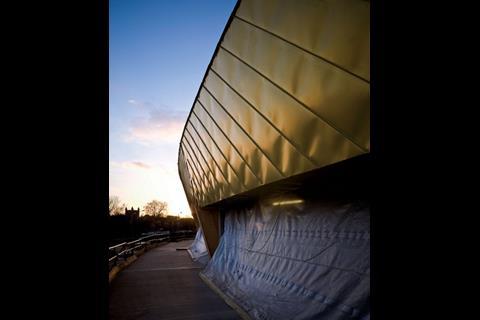
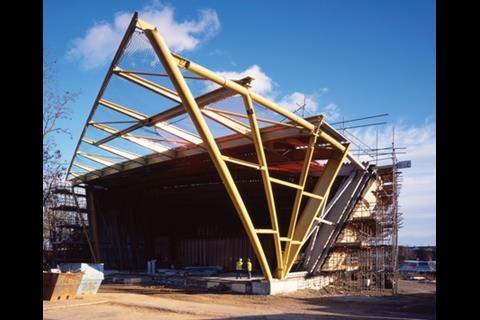

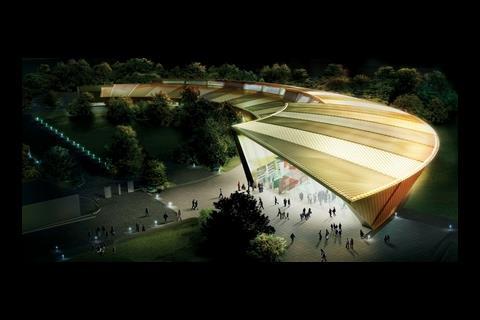
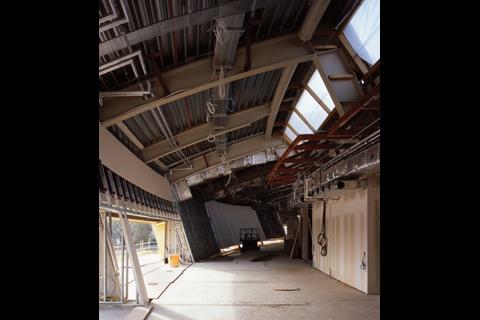
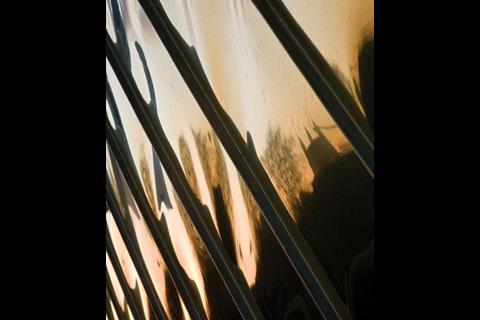
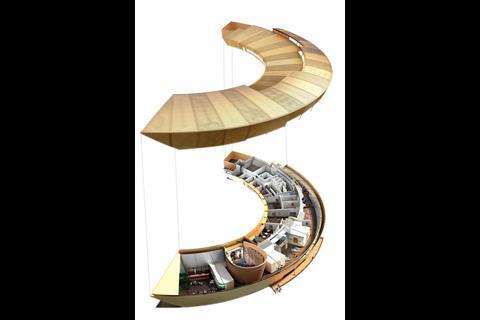

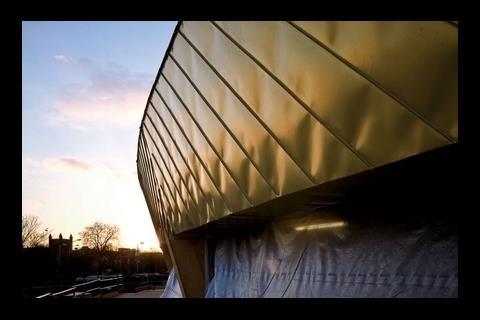







3 Readers' comments